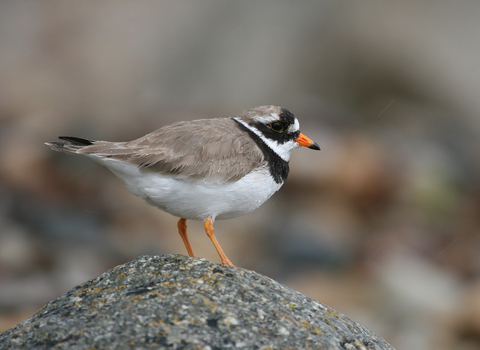
Ringed Plover ©Tom Marshall
Ringed plover
The ringed plover is a small wader that nests around the coast, flooded gravel pits and reservoirs. It is similar to the little ringed plover, but is a little larger, has an orange bill and legs, and doesn't have a yellow ring around its eye.
Scientific name
Charadrius hiaticulaWhen to see
January to DecemberSpecies information
Category
Statistics
Length: 18-20cmWingspan: 52cm
Weight: 64g
Average lifespan: 5 years
Classified in the UK as Red under the Birds of Conservation Concern 5: the Red List for Birds (2021).
